Year 10+ Constructions
Chapters
Using a Straight Edge and Compass to Bisect an Angle
Using a Straight Edge and Compass to Bisect an Angle
Compass and straight edge constructions are of interest to mathematicians, not only in the field of geometry, but also in algebra. Ancient Greek mathematicians were interested in the problem of "trisecting an angle" (splitting an arbitrary angle into three equal parts) using only a straight edge and compass. It turns out that some, but not all angles can be trisected, but no-one managed to prove that some angles could not be trisected using a straight edge and compass until the 19th Century!
However, it is possible to bisect an arbitrary angle (chop it into two equal parts) using only a straight edge and compass.
For this construction, you will need a straight edge (ruler - but you won't be measuring anything), pair of compasses, a pencil and paper. I have drawn the pictures using the robocompass app. It's fun to play with, and you can use it to do all sorts of geometric constructions. There's a little bit of coding to learn, but a list of instructions is provided. Once you've written your little program, you can invite a few friends over, get out the popcorn, sit back, relax and enjoy the show. Be warned that, when you are using it to draw arcs, the robocompass compass point may appear to be a little away from the centre, but the drawing is actually accurate.The Construction
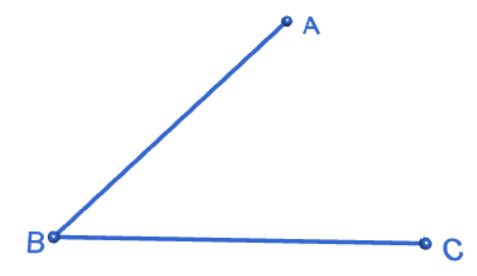
Step 1: Start out by drawing the angle \(ABC\) that you want to bisect. Please don't be like Sam! Use a ruler to draw this.
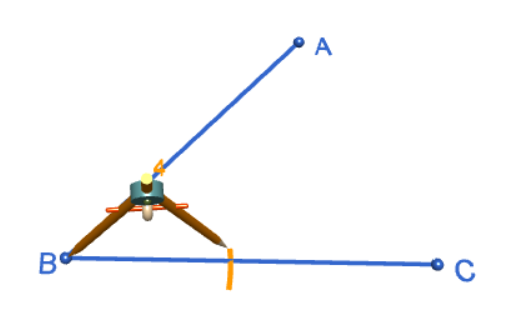
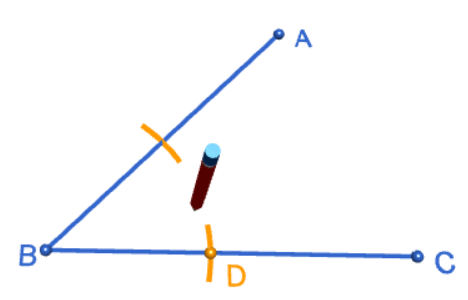
Step 2: Place the tip of your pair of compasses on point \(B\) (the vertex of the angle), and open them out to part of the way along your line segment. You are going to draw four arcs of this radius, so make sure you keep it fixed. Draw two arcs (one on each arm of the angle). Make sure your compass tip is exactly on point \(B\).
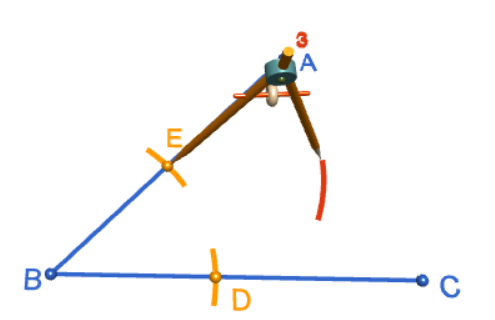
Step 3: Keeping your compasses at the same radius as in the preceding step, place the tip of your pair of compasses on one of the points where the arcs from step 1 cut the arms of the angle. Draw an arc on the inside of the angle.
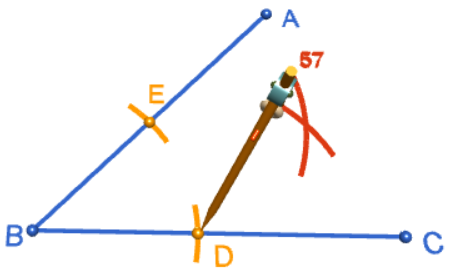
Step 4: Keeping your compasses at the same radius as in the preceding step, place the tip of your pair of compasses on the other point where the arcs from step 1 cut the arms of the angle. Draw an arc on the inside of the angle, that intersects with the arc from Step 3.
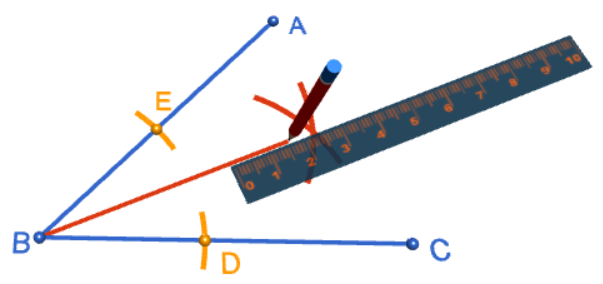
Step 5: Use the straight edge (please) to draw a straight line segment from the vertex of the angle (point B), through the point where the two arcs inside the angle intersect. This line bisects your angle. Sit back and admire your work. Do you think you should frame it?
You can use a protractor to check whether you have managed to bisect your angle. Errors might occur if your compass tip isn't exactly on the point, if you let your radius change, or if you don't line your straight edge up correctly to draw the bisector. Don't be discouraged, these things take practice. Sam hasn't managed to bisect an angle accurately yet, but then, he refuses to use a ruler.
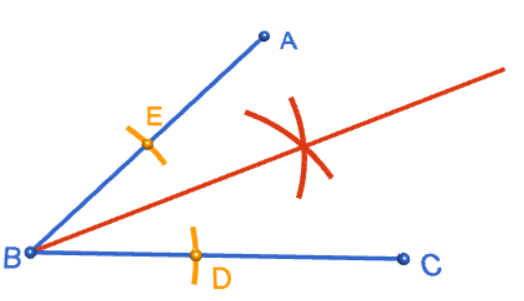
Description
This tutorial will expose you to Rulers and how to use them. We will also have a close look as set square and compass constructions. Your feedback is important to us, if you like any other topic covered under this tutorial, please do let us know.
Audience
Year 10 or higher
Learning Objectives
Ruler and compass constructions and more
Author: Subject Coach
Added on: 27th Sep 2018
You must be logged in as Student to ask a Question.
None just yet!